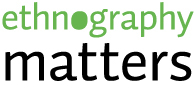Making! The Other Story: Robot#10, Twins Separated at Birth, and Hacker Mama

Silvia Lindtner

Amelia Guimarin
Editor’s Note: Silvia Lindtner (@yunnia) and Amelia Guimarin (@femhacktweets) round out the March-April theme on makers, hackers, and engineers with this post that shares three stories of hackers and makers in China. Their observations complicate the celebratory story of hacking/making, giving us a richly detailed look at some of the real challenges and triumphs in this very active space.
Silvia Lindtner (@yunnia) is a postdoc at the ISTC-Social at UC Irvine and at Fudan University Shanghai, and is the cofounder of Hacked Matter. She researches, writes and teaches about maker culture and its intersections with manufacturing in China. Drawing on her background in interaction design and media studies, she merges ethnographic methods with approaches in design and making. This allows her to provide deep insights into emerging cultures of technology production and use.
Amelia Guimarin (@femhacktweets) is a independent producer and researcher at UC Irvine. She has a background in anthropology and documentary filmmaking and focuses on issues of identity, labor and sustainability. She also runs femhack.com, a showcase of DIY strategies for females with a hacker attitude.
“Making” is envisioned as a new mode of engaging the world, empowering citizens to turn from passive consumers into active participants in economic processes, state affairs and technological innovation. It is heralded as the saviour of broken economies and educational systems, across developed and developing regions alike. This vision of the rising maker is a powerful one. Indeed, it has attracted significant corporate investment (from places like Intel), drawn the attention of governments (from Obama to China) and mobilized money and people across regions (enabled in part by the set-up of new hardware accelerators like HAXLR8R). Making gets people excited (again). It is the story of adventure and of conquering unfamiliar territory to reinvent how technological futures are made today — at its heart it is a vision of technological and social progress. Journalists, scholars, and makers alike have been busy telling this story, joining in on the promotion of making as the harbinger of an industrial revolution (Anderson 2012).
What has fallen through the cracks, however, are other stories of making that do not neatly fit the maker story of linear technological progress, of the Californian culture of cool and of embarking on a bold adventure. In this blog post, we focus on telling this other story of making — of those makers who are rarely thought of as makers and whose stories are less often told.
Earlier this month, we traveled to Shenzhen to attend China’s first featured Maker Faire. Both of us came to the Maker Faire predominantly as researchers, although with different vantage points. Silvia lives in China and has been conducting ethnographic research with China’s maker scene and its intersection with manufacturing since 2010. Amelia lives in California, where she has been working as a documentary filmmaker and researcher on the topic of hacking and education. We recently embarked on a collaborative project of producing a documentary film on China’s makers, with a particular focus on what is going in the Southern parts of China, where small scale maker entities are forging new connections with manufacturers.
There is both a power and responsibility that comes with holding paper, pen and camera – a topic that has received much attention in the discipline of anthropology. The ethnographer makes her fieldsite – she choses whose story to capture and how to tell it, co-constructing the sites she studies through the narrative that emerges from her work. It was in the evening of the last day of the maker faire, when it occurred to us that there was another maker story to be crafted here; it was the end of two exhilarating days filled with workshops, panels, and product showcases with presenters ranging all the way from small-scale start-ups to large corporations like Intel and Foxconn. We were about to head back to the hotel to drop off the equipment, when we paused. Something had changed. The streets that were filled, just hours before, with thousands of enthusiastic makers and visitors were empty, aside from a group of workers, who were in the midst of tearing down the large tents that had protected the booths of gadgeteers from the heavy rain of southern China. It was quiet, aside from the shouts of the workers who in a coordinated effort disassembled the tent. A few hours later – while the makers partied, drank, danced, talked, and celebrated their successful event – the tents were dismantled and loaded onto large by-standing trucks, with no sign left of a big event having ever taken place. A woman with a broom made out of twigs swept the street of the faire’s last remains.

Shenzhen maker faire tents being torn down
It was in this moment that it became clear to us how much attention is paid to the making of the thing, while the work that goes into sustaining and enabling making the thing is rarely appreciated or lauded as equally cool and valuable. Who builds up and tears down (literally and metaphorically) the maker tent? Who performs the work of organizing maker faires and conferences, of raising money, of building important social connections to promote and engage makers and consumers? What other modes of making are there? What alternative models of collaboration and open-ness do we overlook?
This post will not be about the loudest, boldest and coolest projects at the Shenzhen Maker Faire. It will be about those who work more quietly, and perhaps with more sincerity, than their noisy counterparts on stage.




















Recent Comments